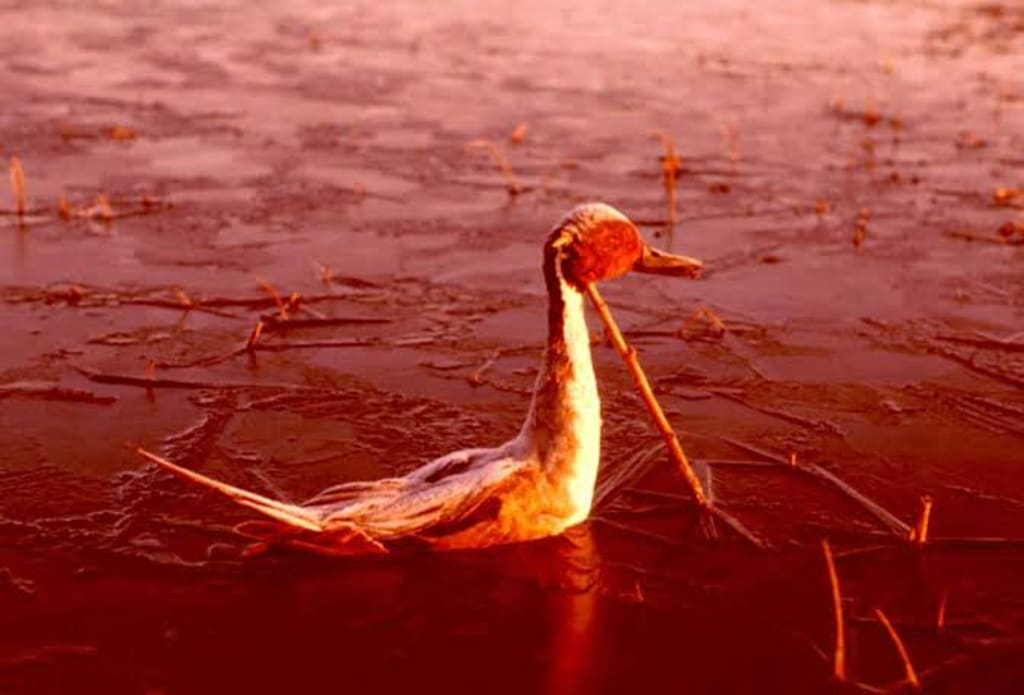
Introduction:
Have you ever heard of Medusa, the snake-haired Greek monster who turns people to stone with a single glance? While Medusa is purely a myth, there exists an eerie place so deadly it could almost make you believe in such legends. We're talking about Lake Natron, a Tanzanian marvel with waters so treacherous they could potentially "petrify" you. What makes Lake Natron water so dangerous, what kind of creatures inhabit its depths, and could you survive if you accidentally took a plunge? Let's dive into the mysteries of Lake Natron and explore what would happen if you jumped into this perilous body of water.
The Composition of Lake Natron:
Much like the Dead Sea, Lake Natron in Tanzania doesn't flow into any oceans or rivers. It's a closed ecosystem that absorbs the salty desert rain, making it unique and treacherous. This volcano spews a rare type of lava rich in sodium and potassium carbonate, which is called natural carbonatite or Natron for short. This volcanic activity releases these chemicals into the lake, creating a deadly cocktail. The resultant mixture of sodium carbonate and sodium bicarbonate is similar to the key ingredients used in ancient Egyptian mummification, preserving the dead. In Lake Natron, this concoction takes on a liquid form.
The lake's chemical composition is extremely alkaline, with pH levels of 10.5, close to that of ammonia. This high alkalinity is what gives the lake its distinctive rosy hue. Unfortunately, for any birds that take an ill-fated dive into its waters and fail to escape, they become calcified, turning into hardened stone-like husks. It's a grim fate that echoes the idiom of "killing two birds with one stone."
Flourishing Flamingos:
Lake Natron, despite its lethality, supports a particular species of bird—the flamingos. These majestic creatures thrive in this hostile environment. They have evolved with tough skin and scaly legs that prevent their bodies from succumbing to the harsh alkaline waters. Flamingos can also drink fresh water from nearby springs or geysers and, if necessary, filter saltwater using special glands in their nasal cavities. Moreover, their resilient stomachs allow them to feed on the toxic algae that abounds in the lake. All of these adaptations make Lake Natron a perfect place for flamingos to raise and protect their young.
The Human Experience:
However, for humans, surviving a dip in Lake Natron is not as straightforward. Depending on the time of year, the water temperature can reach up to 60 degrees Celsius, which is hot enough to cause third-degree burns within seconds. The lake's shallowness is also deceptive, as it's riddled with sharp, salty structures that make it a perilous place for recreational swimming. While you wouldn't be turned to stone instantly, if you were to drown and remain submerged, your entire body would gradually harden and be preserved, much like the process of mummification. Natron's high alkalinity halts the decomposition process, leaving you relatively intact for centuries, should someone discover your remains.
Conclusion:
Lake Natron, with its deadly waters and alkaline composition, serves as a poignant reminder of nature's capacity for both beauty and brutality. While flamingos have successfully adapted to its harsh conditions, humans should be cautious and avoid taking a plunge into this perilous lake. It may not turn you to stone instantly, but the risks and the discomfort it poses are far from the ideal swimming experience. Lake Natron stands as a testament to the marvels and perils of our natural world, a place where life and death intersect in an extraordinary and unique way.





Comments (1)
It's an interesting place to visit for sure! Not swimming there though...